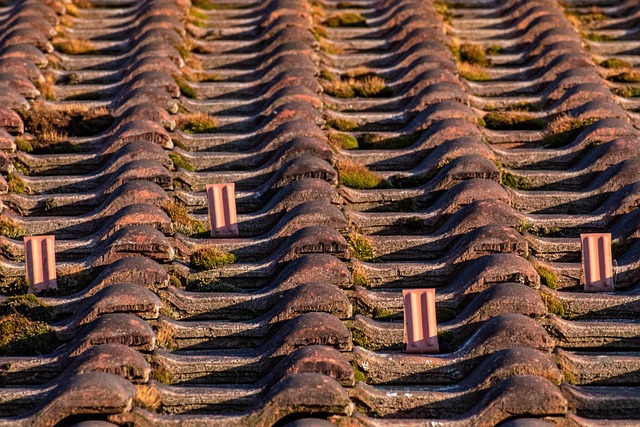Living roofs offer a sustainable solution for energy conservation by acting as natural insulators, reducing reliance on air conditioning and heating systems, and optimizing indoor temperatures year-round. This eco-friendly approach not only lowers energy costs but also enhances urban sustainability, mitigates extreme weather effects, and improves overall building comfort.
Green roofs, also known as living roofs, are transforming urban landscapes and offering significant energy conservation benefits. This innovative approach integrates vegetation into architectural designs, providing multiple advantages for buildings and their occupants. By reducing energy consumption, these eco-friendly features act as natural insulation, helping regulate indoor temperatures year-round. Through this article, we explore how living roofs utilize natural cooling mechanisms, lower heating costs, and enhance overall building efficiency, contributing to a sustainable future.
- Reducing Energy Consumption: How Green Roofs Act as Insulation
- Utilizing Natural Cooling Mechanisms: The Role of Vegetative Cover
- Lowering Heating Costs: A Sustainable Solution for All Seasons
- Enhancing Building Efficiency: The Multifaceted Benefits of Living Roofs
Reducing Energy Consumption: How Green Roofs Act as Insulation
Green roofs, also known as living roofs, offer an innovative solution for energy conservation by acting as natural insulators. The layer of vegetation and soil on top of a building provides an extra barrier against extreme weather conditions. During hot summer months, the plants absorb sunlight and release moisture into the air, cooling down the roof and the building below. This process significantly reduces the need for air conditioning, leading to lower energy consumption and associated costs.
As insulation, green roofs help maintain consistent temperatures year-round. In colder climates, the vegetation provides an additional layer of protection against heat loss, while in warmer regions, it helps keep buildings cooler, minimizing the strain on heating and cooling systems. This natural insulative property not only benefits energy efficiency but also contributes to a more sustainable and environmentally friendly urban landscape.
Utilizing Natural Cooling Mechanisms: The Role of Vegetative Cover
Green roofs, or living roofs, offer a unique opportunity to harness nature’s cooling mechanisms, providing an effective energy-saving solution for buildings. The vegetative layer acts as a natural insulator and helps regulate indoor temperatures. During hot weather, the plants absorb sunlight, reducing heat absorption into the building structure. This process is especially beneficial in urban areas where concrete and asphalt contribute to the ‘urban heat island’ effect.
The vegetation on a green roof creates a microclimate, offering shade and improving air quality. As water evaporates from the plant leaves, it provides additional cooling, similar to natural transpiration. This mechanism not only reduces the need for artificial cooling systems but also contributes to a more sustainable and environmentally friendly built environment.
Lowering Heating Costs: A Sustainable Solution for All Seasons
Green roofs, also known as living roofs, offer a simple yet powerful solution for energy conservation, particularly in terms of lowering heating costs. During the colder months, these roof systems act as an extra insulation layer, helping to retain heat and reduce the need for indoor heating. The plants and soil on the roof absorb and store sunlight during the day, releasing this warmth slowly into the building at night, creating a natural thermal barrier.
This effect is even more pronounced in regions with extreme weather conditions, where green roofs can significantly decrease energy expenditure. By maintaining a consistent temperature, these sustainable solutions contribute to cost savings and a reduced carbon footprint. Moreover, living roofs provide year-round benefits, offering insulation during winters and coolness during summers, making them an all-season solution for efficient energy management in any climate.
Enhancing Building Efficiency: The Multifaceted Benefits of Living Roofs
Green roofs, also known as living roofs, offer a multifaceted approach to enhancing building efficiency and energy conservation. One of their key advantages is thermal insulation. The layer of vegetation helps regulate indoor temperatures by providing an extra barrier against extreme weather conditions. During hot summers, the roof acts as a natural cooling system, absorbing and evaporating water to mitigate the building’s heat gain. Conversely, in cold winters, the plant material provides additional insulation, reducing heat loss and lowering energy consumption for heating.
Furthermore, living roofs contribute to passive cooling through transpiration—a process where plants release moisture into the air. This natural mechanism can significantly decrease the urban heat island effect, leading to reduced energy demands for air conditioning. By integrating greenery into the building envelope, these roofs also provide sound insulation, acting as a buffer against external noise pollution, thereby creating more comfortable and peaceful indoor spaces.
Green roofs, or living roofs, offer a multifaceted approach to energy conservation. By leveraging natural insulation and cooling mechanisms, these innovative designs significantly reduce heating and cooling costs year-round. The article has highlighted how green roofs act as a protective layer against extreme weather conditions, enhancing building efficiency and contributing to a more sustainable future. Adopting this technology is not just an environmental choice but also a strategic move towards lowering energy consumption and mitigating the financial burden on building owners.
